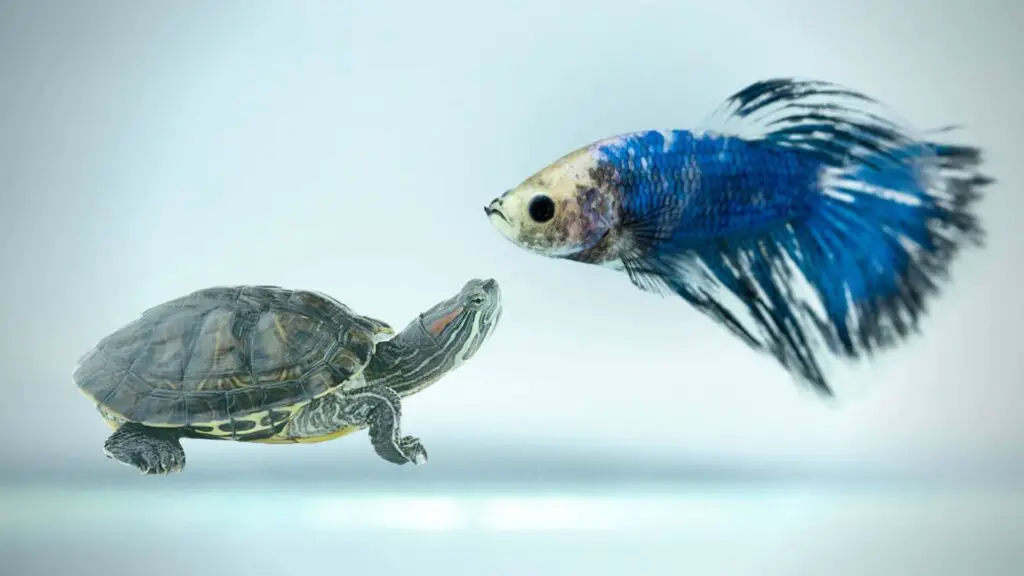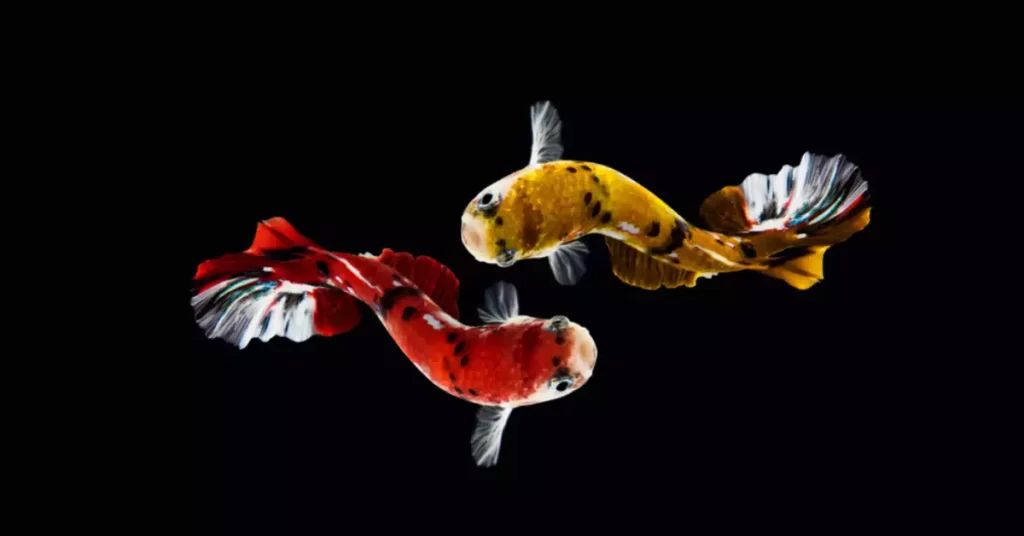Whether you’re a seasoned aquarist or a beginner starting your first tank, you might be wondering if it’s possible for betta fish to live with turtles.
This article will dive into the characteristics and habitats of both species, the factors to consider before introducing them together, potential issues, and tips for creating a suitable environment for coexistence.
Let’s explore the compatibility of betta fish and turtles in a shared aquatic habitat.
Betta Fish: Characteristics and Habitat
Betta Fish Behavior
Betta fish, also known as Siamese fighting fish, are native to Southeast Asia and thrive in shallow, warm water.
Known for their vibrant colors and long, flowing fins, betta fish are popular pets due to their hardiness and unique appearance.
Despite their beauty, bettas are solitary, territorial creatures and can be aggressive toward other fish, especially those with similar features.
Betta Fish Environment Requirements
Bettas require a stable water temperature of 76-82°F (24-28°C) and prefer a pH level between 6.5 and 7.5.
They need a well-maintained, low-flow environment with plenty of hiding spots, such as caves, plants, or decorations.

Turtles: Characteristics and Habitat
Aquatic Turtles Behavior
Aquatic turtles are cold-blooded, omnivorous reptiles that spend most of their time in the water.
They exhibit a wide range of behaviors, from basking to foraging for food, and can be curious and interactive with their environment.
Many turtles are opportunistic eaters and may attempt to eat anything they encounter, including fish.
Aquatic Turtles Environment Requirements
Aquatic turtles require a larger tank size than betta fish and need access to a basking area with a heat lamp to regulate their body temperature.
They thrive in water temperatures between 72-82°F (22-28°C) and need proper filtration to maintain water quality.
Factors to Consider Before Introducing Betta Fish and Turtles Together
Aquarium Size
The first factor to consider is the size of the aquarium. Turtles require more space than bettas, so a larger tank is necessary to accommodate both species.
A minimum of 40 gallons is recommended, but a larger tank will provide more room for each animal to establish their territory and reduce stress.
Temperature Requirements
Both bettas and turtles have similar temperature requirements, which makes it easier to maintain a suitable environment for both species.
Hiding Spots and Territoriality
Providing plenty of hiding spots for betta fish is essential to reduce stress and territoriality. This will allow them to retreat from potential confrontations with turtles and avoid injury.

Precautions to Take When Introducing Betta Fish and Turtles
Before introducing betta fish and turtles together, it’s important to take some precautions.
Quarantine any new additions to the aquarium for at least two weeks to prevent the spread of disease.
Introduce betta fish to the tank first, allowing them to establish their territory. Then, add the turtle(s) slowly, monitoring their behavior closely.
Potential Issues with Betta Fish and Turtles Living Together
- Aggression: Turtles may become aggressive towards betta fish and see them as potential prey. Bettas may also become aggressive towards turtles, especially if they feel their territory is threatened.
- Health Issues: The presence of turtles may increase the risk of bacterial and parasitic infections in the tank, which can negatively affect the health of both species.
- Dietary Differences: Turtles and betta fish have different dietary requirements, so providing appropriate food for both species may be challenging.
Selecting the Right Species of Turtles to Coexist with Betta Fish
Some turtle species are more compatible with betta fish than others.
Smaller, less aggressive turtle species, such as the musk turtle or the Reeves’ turtle, are more likely to coexist peacefully with betta fish.
Avoid larger, more aggressive turtle species, such as snapping turtles, which are more likely to prey on betta fish.
Creating a Suitable Habitat for Both Betta Fish and Turtles
To create a suitable habitat for both betta fish and turtles, ensure the following:
- Provide ample swimming space and hiding spots for betta fish.
- Create a basking area with a heat lamp for turtles to regulate their body temperature.
- Use proper filtration to maintain water quality.
- Maintain a stable water temperature and pH level suitable for both species.
- Provide separate feeding areas to avoid competition for food.
Monitoring Betta Fish and Turtle Interactions
Closely monitor the interactions between betta fish and turtles to ensure their coexistence is peaceful. If you notice aggression or signs of stress, consider separating the species or providing additional hiding spots.
Alternative Tank Mates for Betta Fish
If betta fish and turtles are not compatible in your aquarium, consider other tank mates for betta fish, such as:
- Harlequin Rasboras
- Neon Tetras
- Corydoras Catfish
- Ghost Shrimp
- African Dwarf Frogs
FAQs
Can betta fish live with turtles?
It is possible for betta fish to coexist with certain species of turtles under the right conditions.
However, it may not be suitable for all aquarium setups, and close monitoring is necessary to ensure the safety and well-being of both species.
What turtle species are compatible with betta fish?
Smaller, less aggressive turtle species, such as musk turtles and Reeves’ turtles, are more likely to coexist peacefully with betta fish.
What precautions should I take when introducing betta fish and turtles together?
Quarantine new additions, introduce betta fish first, provide plenty of hiding spots, and monitor their behavior closely.
Conclusion
Betta fish and turtles can coexist under certain conditions, but it requires careful planning and monitoring to ensure the safety and well-being of both species.
By taking the necessary precautions, selecting compatible species, and creating a suitable habitat, you can increase the chances of a successful cohabitation.
However, it’s important to be prepared for potential issues and consider alternative tank mates if necessary.